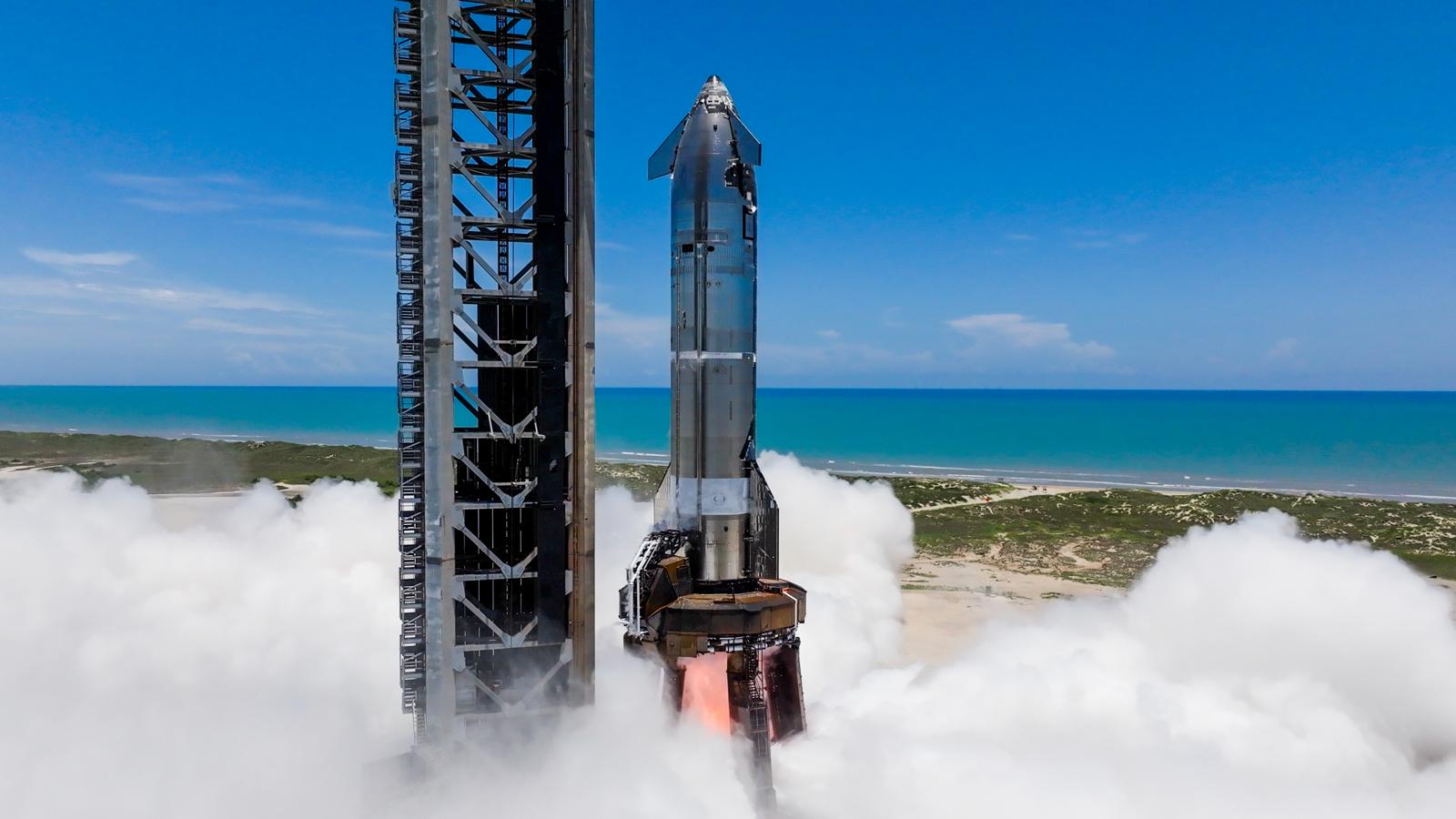 Image Source: Space
Image Source: Space
Key Highlights
On July 31, 2025, SpaceX successfully conducted a single-engine static fire test of its newest Starship upper stage (Ship 37) at its Starbase facility in South Texas, marking a crucial milestone in preparations for the highly anticipated 10th orbital test flight.
This 171-foot-tall (52-meter) stainless steel Starship upper stage briefly ignited one of its six powerful Raptor engines while secured to the launch pad, demonstrating readiness for an in-space burn and validating key propulsion and ground support systems.
Ship 37 is the second vehicle SpaceX has designated for the 10th test flight after Ship 36 was destroyed during a static fire anomaly in mid-June 2025.
The Super Heavy booster for this mission, Booster 16, has already completed its static fire test by running all 33 Raptor engines in early June, supporting confidence in the integrated vehicle's performance.
The combined Starship-Super Heavy stack, standing approximately 400 feet (122 meters) tall, is the largest and most powerful launch vehicle ever built, designed ultimately for fully reusable orbital and deep space missions, including Mars colonization goals.
Flight 10 Context and Expectations
SpaceX’s 10th Starship orbital test flight is scheduled for no earlier than August 4, 2025, with Elon Musk hinting at a launch window sometime in early to mid-August.
Each test flight progressively advances vehicle reliability after earlier flights saw challenges such as uncontrolled upper stage landings or explosions during descent.
Flight 10 is expected to follow a similar operational profile to recent tests—launching from Starbase, achieving orbit, and targeting a controlled landing for vehicle recovery and reuse demonstration.
Comprehensive prelaunch testing, including cryogenic pressure checks and the recent static fire, aim to mitigate risks and ensure mission success.
Technical and Engineering Details
Ship 37’s static fire test serves to validate critical engine systems, tank integrity, and thermal management while integrated on the Orbital Launch Mount (OLM).
The Raptor engine model delivers approximately 500,000 pounds of thrust and runs on liquid methane and liquid oxygen, a cleaner and more efficient propellant choice aligned with SpaceX’s Mars ambitions.
Ground systems at Starbase facilitate propellant loading, engine ignition, and vehicle monitoring, with ongoing upgrades to support rapid test cadence and enhance launch safety.
The stainless steel construction of Starship affords it strength and high-temperature tolerance, enabling both atmospheric reentry and extended space missions.
SpaceX Starship Program Progress and Vision
Starship’s development signals a paradigm shift aiming to drastically reduce launch costs by implementing full reusability for both stages, thereby increasing launch frequency and payload capacity.
Beyond NASA’s Artemis lunar program involvement, Starship is envisioned to service satellite deployment, cargo missions, crewed orbital flights, and interplanetary exploration.
Despite setbacks in prior flights—including loss of prototypes in testing—the program maintains an aggressive testing and iteration approach to reach operational status rapidly.
The success of Flight 10 is pivotal to testing integrated vehicle systems and demonstrating progress closer to the first crewed Starship missions.
Broader Industry and Public Interest
SpaceX’s Starship has captivated global attention as a tech marvel and a linchpin for humanity’s future in space exploration, inspiring space enthusiasts, researchers, and commercial stakeholders.
Each milestone—from Starship assembly to engine static fires and flight tests—has been widely followed through live streams and social media, amplifying public enthusiasm and transparency.
NASA, commercial customers, and international space agencies eagerly monitor SpaceX’s advances, considering Starship’s potential for reducing barriers to accessing space.
Conclusion
SpaceX’s recent single-engine ignition of Starship’s upper stage represents a critical step toward the historic 10th orbital test flight anticipated in August 2025. After overcoming prior losses and technical challenges, this successful static fire builds confidence in the vehicle's readiness and fuels momentum for achieving fully reusable, large-scale spaceflight capabilities. As Starship edges closer to operational maturity, it embodies a transformative vision for how humanity can explore and inhabit the solar system—ushering a new era in aerospace innovation.
Sources: Space.com
Advertisement
Advertisement







